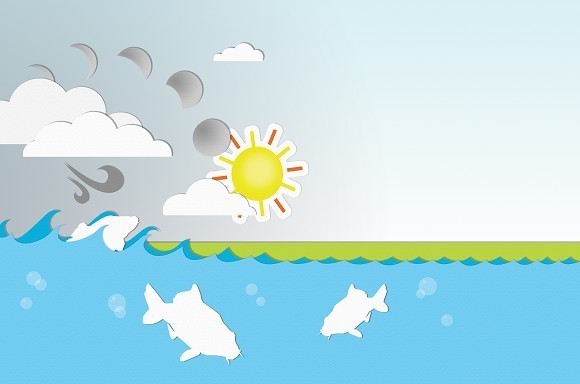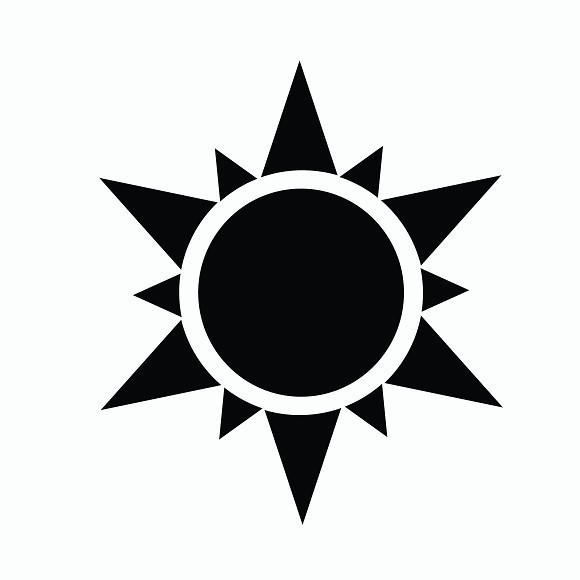
How to use the weather as an advantage
It's the one thing that will affect the behaviour of carp every day of the year, but how can this help us?
A few carp showing out in the lake can make things a whole lot easier when it comes to location and knowing what area of the lake to try and fish, but where do you start when the fish aren’t quite so obliging? Well, one massive piece of the puzzle will be the weather conditions, so lets take a look at some of the main elements.
First up: Wind
The wind is one of the first things to take into consideration, primarily because it can dramatically affect the temperature of the water. Carp are no different to us in that they enjoy some warmth more than the cold, so more often than not you can expect carp to follow a warm wind or back off and hold on the back of a cold one. This will often result in carp feeding hard on the bottom at the area of the lake receiving a warm wind causing natural foods to be churned up. In contrast to this, carp may prefer the warmth of the sun in the calm area behind a cold wind and be found cruising the surface layers where floater fishing tactics can be a real winner. Warm winds from the south or west will nearly always coincide with other favourable feeding conditions that we’ll come to next.
Next up: Air pressure
Air pressure is the force exerted by tiny particles of air and is measured in milli-bars (inches of mercury) by a barometer. This form of pressure has a significant bearing on carp and they’re willingness or ability to feed. The rule of thumb being that the higher the air pressure the less likely carp are to feed on the lakebed or if they do, it will be for shorter periods. This is probably due to a discomfort placed upon the swim bladder of the fish. Higher than average air pressure, 1020mb and above, is a good indicator that fish may be happier high in the water.
As anglers we can use this assumption to formulate an approach where in this case Zig rigs could work well. On the other hand, lower than average air pressure 1010mb and below can see carp feed hard on the bottom. This is a great time for us to take advantage of these favourable conditions, by giving the carp a heavy feed approach like a big bed of nutritional boilies. Prime time spells of low air pressure will often follow the warm south or west winds mentioned earlier.
And lastly: Moon phases
Okay, so we can now make some educated assumptions about how and where to fish, simply by taking a look at the forecast weather, but is there anything else that can have an effect? Well, there is one that’s a matter of opinion as to just how significant it is and that’s the moon phase. A lot of big carp, and commons in particular, have an uncanny knack of being caught in conjunction with a full moon. Some anglers will tell you of different waters fishing better at the start of a new moon phase or the latter half of the phase, known as a waning moon. Whether or not you buy into the a moon phase theory, it’s difficult to dismiss that something powerful enough to cause the ocean tide couldn’t somehow have any bearing. So it’s worth making notes of the moon phase when any carping success is enjoyed, as it may just lead to more or bigger fish in the net!
Weather/angling scenario guide
Scenario: A cold easterly wind blowing across the lake. It is really chilly and blowing with consistency.
Outcome: Most of the fish will be sheltered at the back of this cold wind.
Scenario: A new and warm southwesterly wind blowing strongly across the lake with a light drizzle in the air.
Outcome: A lot of fish will follow a new and warm wind so get on the end of it.
Scenario: It’s a cold winter day with clear blue skies and high pressure.
Outcome: Get on the bank which receives early morning sunlight and that commands the deeper water and fish Zig Rigs in the upper layers of the water.
Scenario: The conditions are hot and sunny (summer conditions) with a high pressure and clear sky.
Outcome: A lot of fish will be in the upper layers so fish Zig Rigs or surface baits to them.
Scenario: The lake is flat calm with a light amount of drizzle in the air and it’s low-pressure.
Outcome: Look for fizzing and showing fish and cast baits at them. They should be fairly easy to locate in these conditions.
Scenario: It is winter and we’re going through a mild period. It’s overcast with a new westerly wind.
Outcome: Follow the wind and fish right in the edge.
Scenario: You arrive at the lake and there is an old south wind that has been blowing for nearly a week.
Outcome: A lot of fish would have already followed the wind for a few days and they are now starting to spread out and head towards the back of it.
Scenario: The wind is northerly and there is drizzle in the air with low-pressure.
Outcome: Some fish will follow a northerly but because it is cold, many fish will shelter from it and head to the back of it this wind.











